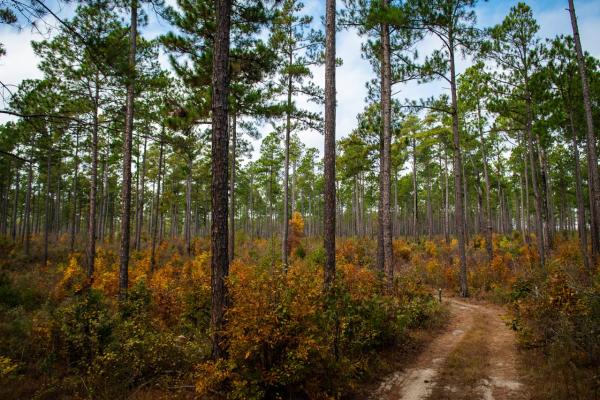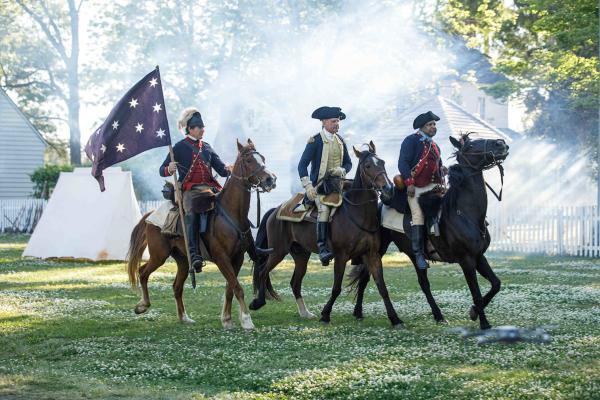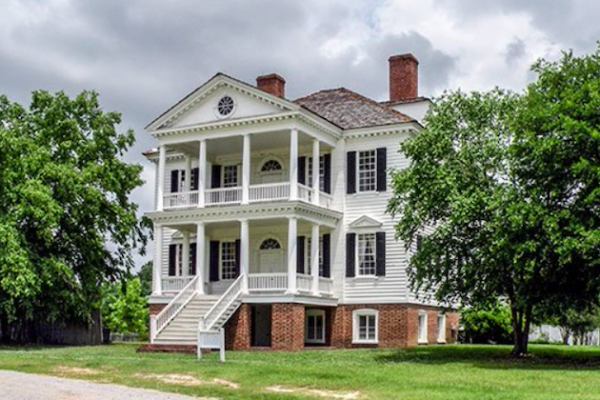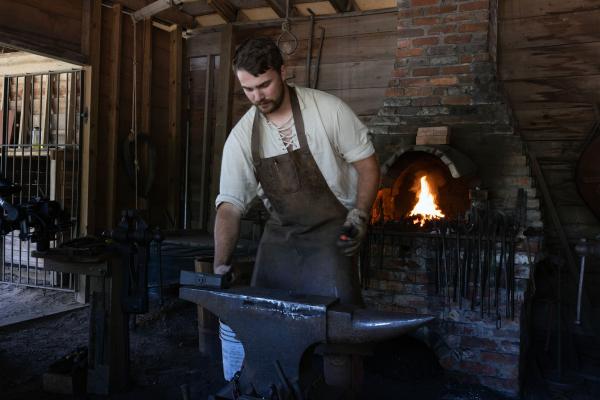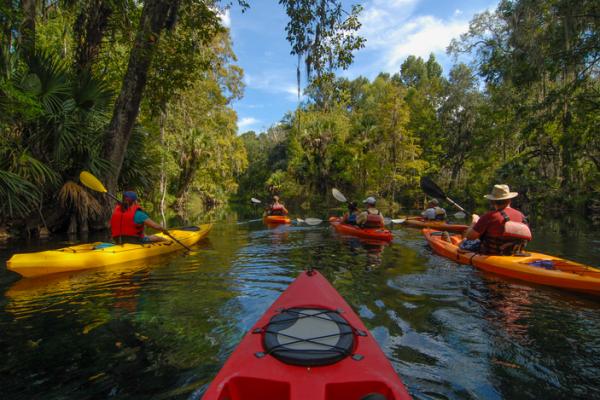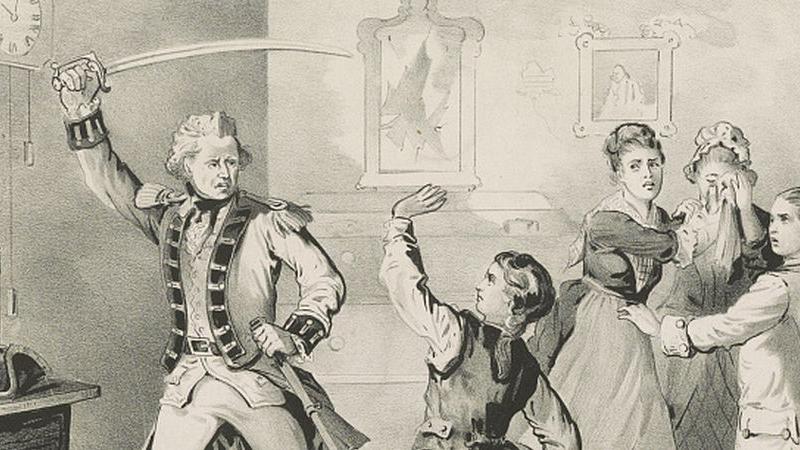
"Bloody Ban" in the Backcountry
Reposted from battlefields.org
Of all the colonies that suffered during the War for Independence, few endured the brunt of the constant bloodshed in its final years as South Carolina. Contrary to popular convention, much of the fighting in the Revolutionary War was conducted in much the same manner as most conventional 18th century warfare: strictly organized and disciplined armies, utilizing linear tactics, taking part in pitched battles on the open field, with the Continental Army quickly transitioning from a ragtag militia to a fully professional force. As the war moved South however, the terrain in the backcountry gave way to a sustained guerilla campaign in addition to the traditional Continental forces. Current estimates suggest that over 1,000 Americans died in the fighting here, almost one-fifth of those that died in battle throughout the entire war. This, of course, says nothing about those who died of disease or starvation, as well as the destruction of private and public property by forces attempting to root out the partisans. Because of this viciousness, these final years left a bitter impact in the memory of the survivors and their descendants. In fact, there seems to have been a unique set of circumstances that set the War in the Backcountry apart from the other Theaters.
One British unit in particular achieved a particularly nasty reputation for brutality during the war that has yet to fade: the British Legion under the command of Colonel Banastre Tarleton, a roguish but talented son of a prominent Liverpool merchant. While routinely recognized for their courage and professionalism, the very word "Tarleton" became a byword for cruelty in the final years of the war, and those who served under him became some of the most hated men in America. The popular opinion of the Tarleton's Legion continued well into the present day for both history and fiction, culminating in the fictionalized portrayal of the diabolical Colonel "Tavington" by Jason Isaacs in the 2000 film The Patriot. But is any of this a fair reputation, and if it is, what exactly were the factors behind it? Most historians today agree that Tarleton was rash and aggressive, traits that both aided and hindered him at various points during the war, but a butcher? Probably not, or at least not personally. The Waxhaws Massacre, for which he is most infamous and where over a hundred Continental soldiers were cut down with sabers after trying to surrender, likely did not happen because of his orders. Tarleton was, in fact, stuck under a dead horse for much of the battle, and so possibly was unable to keep his troops under control, or simply did not see the flag of surrender his opponents offered.
Though Banastre Tarleton entered the conflict in 1775 and participated in the invasions of New York and Pennsylvania, the young cavalry officer truly came into his own when the focus of the war moved to the southern colonies, particularly in the back country of South Carolina. This area in the colonies presented a series of unique challenges for the occupying British. While much of the northern war was dominated by conventional forces, in South Carolina guerrilla warfare came into prominence. In order to respond effectively to enemy raiding and sabotage, British units needed to be organized on a smaller scale that allowed them to travel lightly and quickly. This is where the concept of the legion became quite useful for British commanders. In a legion, which was a unit around the size of a regiment, infantry would be combined with cavalry and light artillery attachments under a single commander, much like the old Roman legions and their auxiliaries, rather than the two forces acting independently of each other. This enabled the unit to perform small-scale operations like scouting and raiding while safe in the knowledge that support from the cavalry and artillery arms were always available. Tarleton’s Legion in particular was well suited for this role, as it was mostly made of dragoons, soldiers that historically served as mounted infantry, riding into battle but dismounting to fight. But they could also serve as proper cavalry on the battlefield as well, and this versatility made them especially useful in running down bands of loosely organized rebels, or hunting them from township to township. This also meant that they were suited to engage in the anti-insurgency tactics of their day, which often involved a great deal of property damage and civilian casualties, and simultaneously doomed them to ill-repute. The nature of their assignments and their opponents forced them into such ungentlemanly and at times barbaric behavior.
Of course, ungentlemanly behavior was what defined much of the fighting in the Carolina backcountry, from any unit on either side of the war. What made the British Legion unique in the Southern Theater, however, was that apart from Tarleton and a few of his officers, the Legion was not quite as British as the name suggested. Tarleton’s legion was made up almost entirely of American loyalists, marked by their green jackets that set them apart from the British regulars and Hessian mercenaries, which gave Tarleton his nickname, “the Green Dragoon.” Though the Patriots were among the loudest and most organized political voices in the American colonies, not everyone in America desired independence from Great Britain in 1775. At the time of Lexington and Concord, about a third of the population in the Thirteen Colonies chose to remain loyal to Parliament and the Crown. Those who made that decision did so for a variety of reasons: some held sympathies for the Patriot cause but felt that violence was not the right way to achieve independence, or that breaking away itself would cause too much chaos and confusion. Others felt that Parliament and King George clearly had a legal right to impose taxes on the colonies. Some of the wealthier families of cities like New York or Boston had close commercial ties to England and feared that rebellion would disrupt their businesses, still others had family connections they worried would be broken. Most famously, many enslaved people gambled that serving Britain on the battlefield could earn them a chance to get revenge on their former masters and earn their freedom, and while they were technically not Loyalists, many local Native American tribes feared further colonial expansion into their traditional lands, and happily allied with Britain to prevent it. These groups were hardly ever unified, even amongst themselves, but that did not prevent thousands of them from taking up arms in defense of the British government against their neighbors, friends or family members. Even before the war started, disagreements between patriot and loyalists turned violent. The practice of tarring and feathering suspected loyalists is one gruesome example, but loyalist gangs in most American cities were quick to strike back, which left many more neutral people in the crossfire and forced them to choose one side or the other. Such bitterness could have easily translated on the battlefield, especially after a shocking event like Waxhaws. The soldiers of the British Legion were not just the enemy to the Continentals, they were traitors to their countrymen, and the British Legion probably thought of the Continentals much the same. It was these irreconcilable and violent divides that led to some of the bitterest fighting throughout the War for Independence, which heavily colored memory of the conflict for survivors on both sides.
After the British surrender of Yorktown and their final major defeat, the American and French officers invited the vast majority of their English counterparts to dine with them, with a single major exception: Tarleton. Though what happened at Waxhaws was far from the only atrocity committed by either side during the war, the collective outrage over the battle left a deep psychological scar on the Continental Army. Indeed, even Banastre's British comrades would sour on him over time, only giving him military commissions in England and Ireland during the Napoleonic Wars, and his career would never reach the heights his earlier feats might have suggested. The Americans who stayed loyal to Great Britain, especially those who fought with them against the Patriots, fared little better. Tens of thousands of them went into exile, willingly or otherwise, resettling in in Britain or Canada. These were some of the last casualties in America's first civil war.
Learn More: The Southern Theater
More to Explore
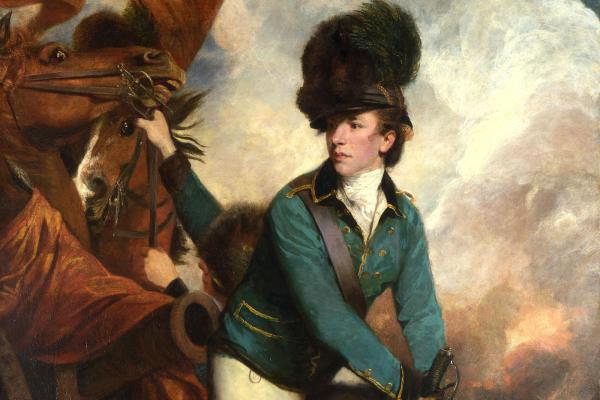
Uncovering History
We invite you to visit the preserved locations along the Liberty Trail and to immerse
yourself in the extraordinary events that determined the fate of a nation.
